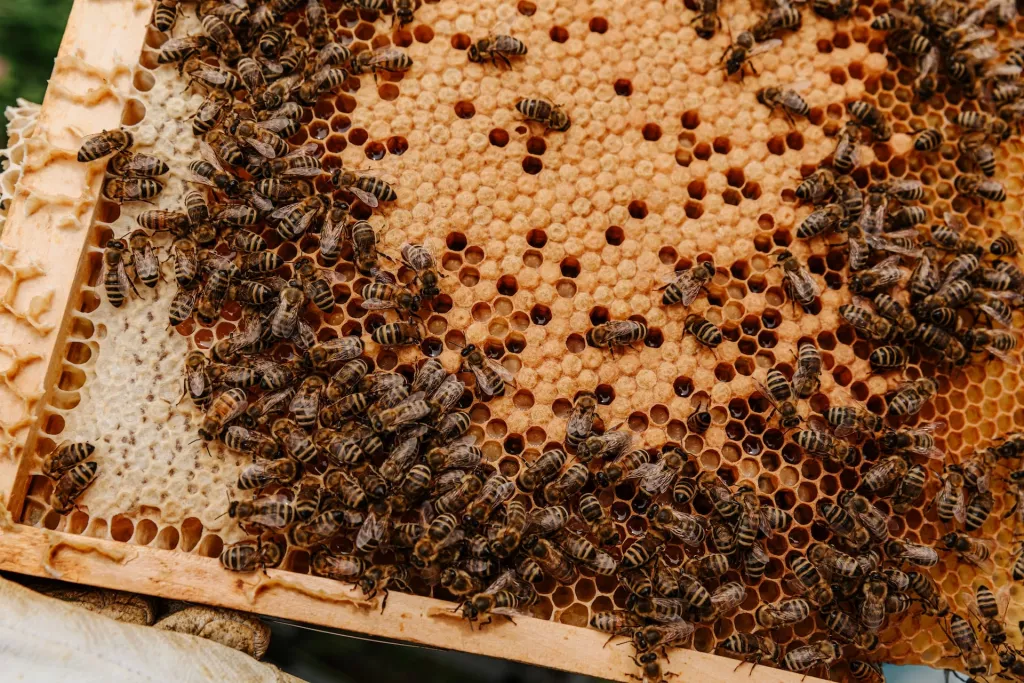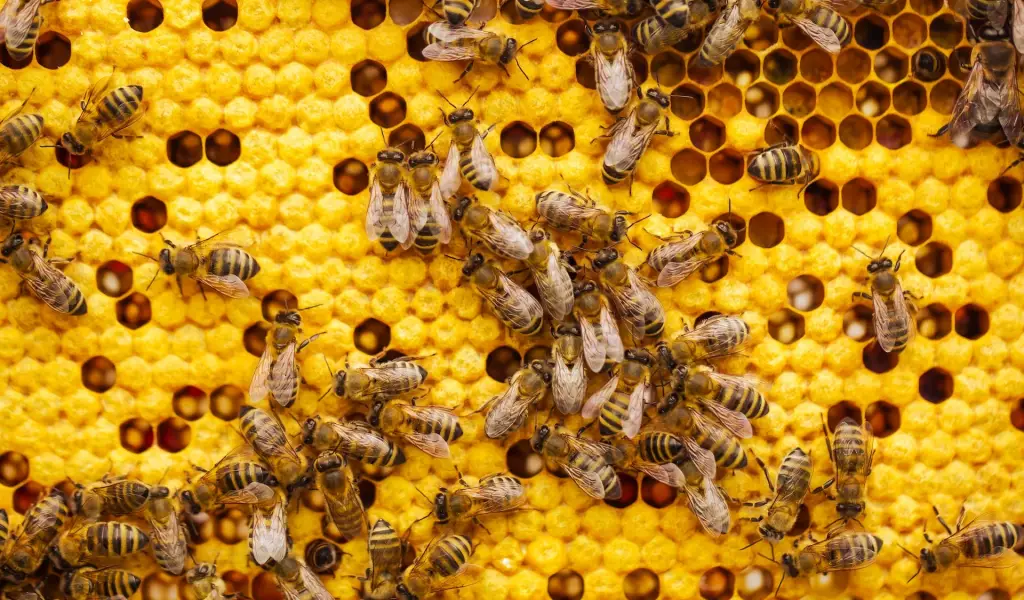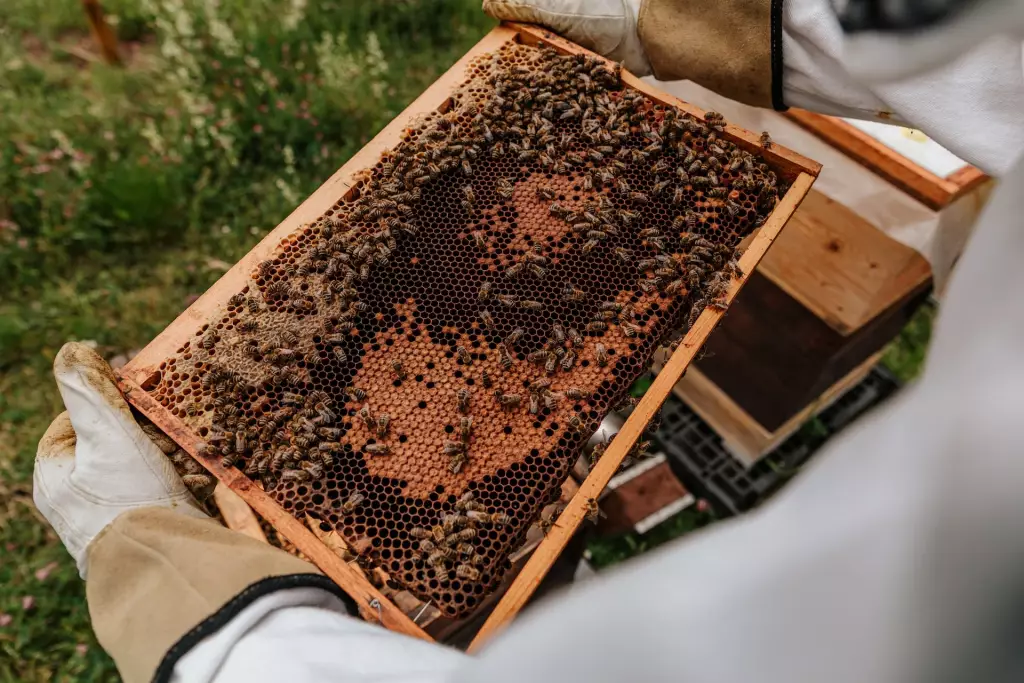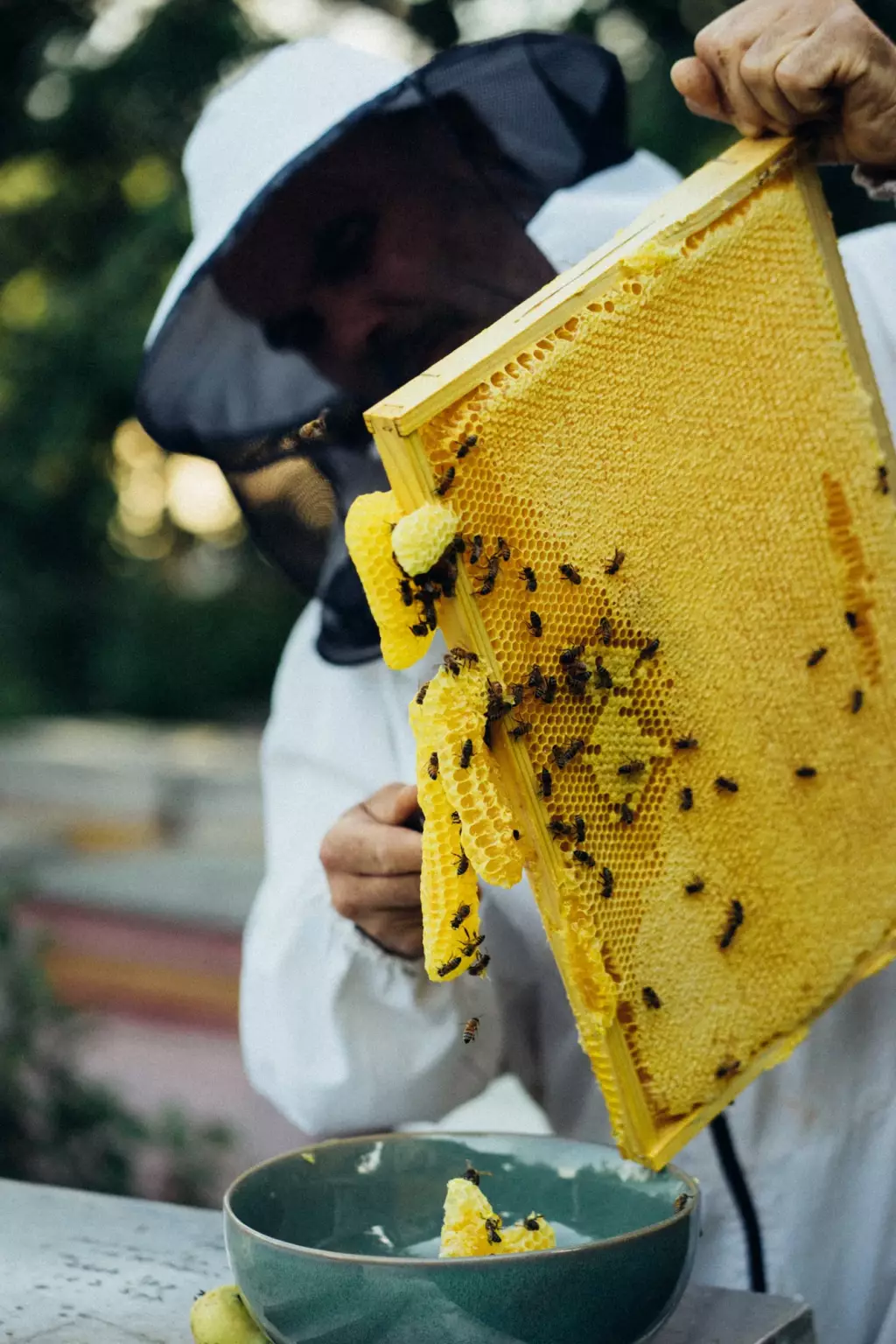The Difference Between Brood & Honeycomb (4 Differences)
The brood comb and the honeycomb are two different cell types found in combs. Understanding their differences will enable you to "read" the comb and determine what your bees are up to.
The brood comb and honey comb differ from one another in four ways: content, cap color, protrusion, and weight. Baby bees are found in brood combs, whereas honey is found in honeycombs. The brood's caps are darker than honey's. While honeycombs are somewhat concave, brood combs protrude. Honey weighs more than brood.
Many beginning beekeepers find it challenging to actually understand what they are looking at. A nest is typically organized with the brood in the middle, followed by the honey stores, and then the defense structures.
Summary
- Capped brood combs are darker and rougher than capped honeycombs.
- Honeycombs are slightly concave, while worker cells are flat, and drone cells form a dome.
- In the winter, honeycombs provide warmth, while in the summer, they act as a cooling insulator.

On this page:
How To Tell The Difference Between Brood And Honeycomb
The brood, the honey stores, and subsequently the defense structures are typically arranged from the center of the nest outward. A concentric layer of pollen-storage cells surrounds the center brood cells in the honey bee hive, followed by an outer layer of honey-storage cells.
Both brood and honeycomb have cylindrical cells that can be packed closely together most efficiently by surrounding each one with six other cells. Since adjacent cells share walls, hexagonal cells form the well-known "honeycomb" pattern.
However, there are four key differences between the brood comb and honey comb, and these are:
- content
- color
- protrusion
- weight
Content
Honeycombs contain the bees' source of food, which is honey, while the brood comb contains the larvae or baby bees.
For a range of important reasons, it is ideal for honey to be stored above the broodnest in a top bar hive. The bees may easily access one of the wide bands of honey when they are rearing their young and combining pollen and nectar to feed larvae.
Color
The honey comb is a lighter yellow comb, capped with beeswax and have a waxy, often white look. The brood comb is indicated by the darker comb, which has a rough cap surface that is straw or paper-colored. These differences in wax may help you determine where the hive's brood is being raised.

The bees coat each cell in the brood nest region with "shellac," a type of propolis, which causes the comb to darken. The combs get progressively darker. The comb changes in color from a first-year comb, when the capped worker brood is pale, to a comb that has at least one cycle of brood laid in it and bees have emerged.
The application of the coating creates an environment that is antibacterial, antifungal, and antiviral, making it the ideal place for the queen to lay some eggs, and for blocking diseases in the hive. Every time a bee emerges from a cell, the worker bees recoat that cell with shellac to keep it clean, so the queen can once again deposit her eggs there.
Protrusion
Capped worker brood cells exhibit a little protrusion from the cell, in contrast to the slightly indented shape of capped honey cells.
The worker brood is less protruding than the capped drone comb. Drone comb more closely resembles the eraser on the end of a pencil.
Weight
A frame with predominantly brood comb is relatively light when picked up by the beekeeper. The brood cell-only frame can weigh approximately six pounds.
The frame is significantly heavier when it has some brood and some honey.
It is particularly hefty when the frame is made entirely of honey. A honey frame can weigh around ten pounds.
What Does A Brood Comb Look Like?
The hive contains two different kinds of brood cells: the drone brood, and the worker brood.
Male drone bee brood and female worker bee brood have different appearances. Drone cells are slightly higher and taller than the rest of the comb because they are larger than worker bee cells. They appear to be protruding from the comb. Worker bee brood cells are level with the rest of the comb.
If a queen excluder isn't used, the queen bee will lay her eggs anywhere she sees fit. At the bottom of each brood cell are eggs, which have the appearance of a little white grape or a grain of rice.
After hatching, the eggs develop into larvae, which resemble tiny worms. The worker bees will provide food inside the cell. The little larvae eventually grow to the point where they are visible and are ready to pupate. Around day nine, the nurse bees will approach and cap the cells with shellac to allow pupation to take place.

Capped brood has a darker and rougher appearance than honey-filled cells. Because the cap is porous, the larvae (and later the pupae) can breathe.
The larvae will then spin a cocoon for itself, pupate, and eventually emerge as a young bee. A worker can eventually chew its way out of its own cell, but a drone requires the assistance of other adult workers, who must first chew open the drone's cell before it can be pulled out. A bee is considered to be an adult once it emerges into the outside world.
Capped worker brood
Capped worker brood are the cells from the middle to the bottom of the comb with pale yellow caps. They are typically found in the middle of the frame and are practically flat with a small dome that's not translucent like capped honey.
The pale yellow color implies that they have just been laid by the queen.
One fertilized egg per cell is intended to be incorporated into the majority of cells. The outcome will typically be a worker bee. These are by far the most abundant cells in the brood nest, highlighting the significance of a constant supply of young workers as the colony expands.
Capped drone brood
Capped drone brood are bigger in diameter and have substantially larger diffraction peaks than worker cells. Drone cells typically appear in clusters at the bottom of the frame and resemble circular "bullet shapes."
Drones will take up a set portion of cells, possibly up to 20%. These cells have a rougher, darker cap that protrudes from the cell and gives them a larger, bullet-like appearance.
In comparison to workers, drone larvae and pupae prefer slightly colder temperatures. Because of this, drone cells are frequently positioned towards the lower edges of the frame, far from the heat generated by the cluster.
Uncapped brood
The larva starts off as an eye-catching "milky" white, gradually taking on its recognizable C or curled shape. These are the ones you see in an uncapped brood cell.
The larvae develop from an egg that the queen lays at the base of each cell. The egg transforms into a larva in three days. The larvae will be fed royal jelly by worker bees, that's why their cells are uncapped.
What Does A Honeycomb Look Like?
The bees will build a band of honeycomb above the brood cells in the hive's brood nest area. These cells are light yellow with white caps that are slightly indented or concave.
These honey stores supply food, and they also provide warmth during the cold. The hive is insulated and cooled by the honeycomb and wax.

The thick band of honey works as a heat sink in the winter, assisting the bees in maintaining a warm, regulated hive. In the summer, the honeycomb acts as a cooling insulator to help the bees keep the hives from overheating and maintain the delicate broodnest temperature.
Capped honey
Capped honey cells are the band of white wax caps. Capped honey can be found throughout the hive. But if a queen excluder is being used, the bees will store the majority of the honey in the "honey supers".
Nectar from flowers is collected by bees, who transport it back to the hive and place it in the honey cells. The bees reduce the water content in the nectar to less than 20% by transferring the substance between their mouths and fanning it with their wings. This prevents spoilage or fermentation.
After determining that the substance meets all the criteria for being considered honey, the bees cap the cells with a thin layer of beeswax to stop the evaporation process and to keep the honey safe from predators.
Bees just chew the wax cap to get to the honey when they need it for feeding. The wax cap can sometimes be seen through to see the honey inside.
The majority of beekeepers seek out and fantasize about capped honey, particularly a whole frame of capped honey on both sides.
Uncapped honey
Uncapped honey or uncapped nectar are the open cells with a shiny, moist honey inside.
Given that the liquid's moisture level is more than 18.6%, the contents are not yet honey. It must be equal to or lower than that to be considered as honey. The moisture must evaporate from the cell before it can be categorized as honey, so the bees leave it uncapped.